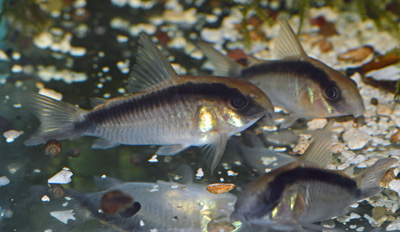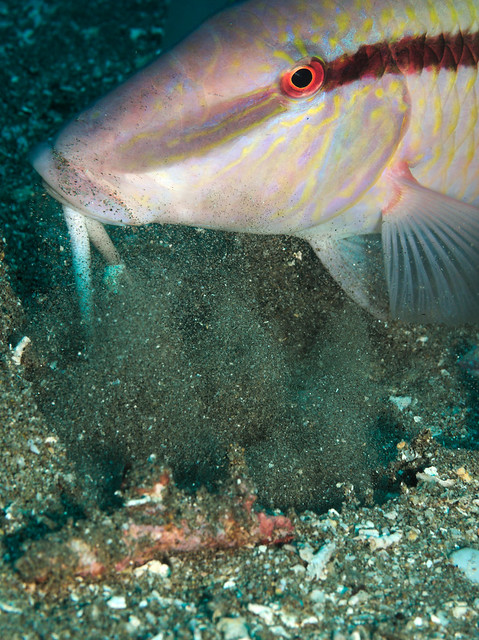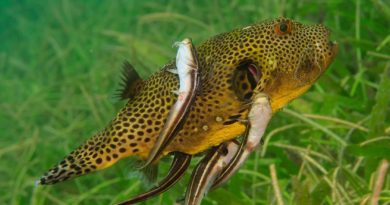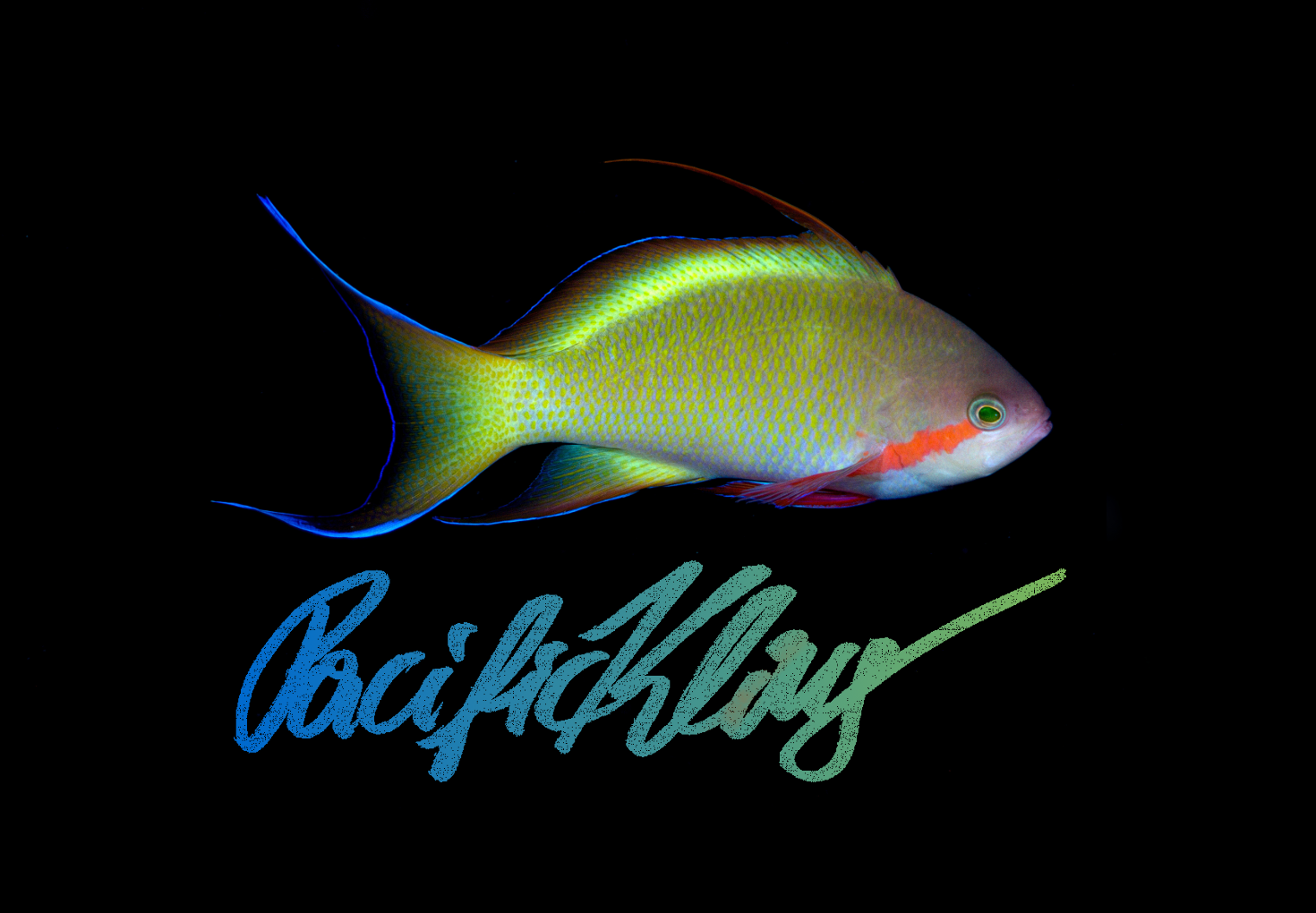Convergent Barbels
Beyond simply appreciating the beauty of animals underwater, I greatly enjoy observing their behavior, especially the behavior of fishes. Recently I had the chance to observe and photograph the foraging behavior of a goatfish, Parupeneus barberinus, in Dauin in the Philippines, close to where I presently live.
This goatfish uses its barbels to chemically detect edibles, invertebrates such as worms or snails, hiding under the sand in the sandy areas next to coral reefs where the fish lives. It works hard, digging sometimes with all of its head up to eye-level in the sand, and sometimes wrasses follow them, hoping to catch some seconds stirred up by the goatfish’s digging.
Noticeable on the downward-facing mouth of the goatfish is a pair of barbels, appendages rich in chemical receptors with which the goatfish can sniff out edibles in the sand. I would think that this sense of smell is the primary sense used by the goatfish when foraging.
Corydoras
Please look at the photograph below: The body of the fish below looks surprisingly like that of a goatfish, with a stocky body, a downward facing mouth, and barbels. It even has a horizontal line along the length of its body, going through (and visually hiding) the eye. BUT this is not a goatfish at all, but a freshwater catfish, Corydoras arcuatus.

Here are thumbnail pictures of most of the 163 species of Corydoras. The genus Corydoras belongs to the Family Callichthyidae, Callichthyid armored catfishes, and live in South- and Central America. They are small and lively, and are very popular aquarium fish. One difference between goatfish and Corydoras is the size, some goatfish gro to a lngth of 50 centimeters, while the Corydoras remain small, at a few cm of length. I used to keep a small group of them in my freshwater fish tank many years ago in Austria, and the Corydoras digging was similar in style to that of the goatfish, and their tank-mates would often follow them in the hope of catching seconds from what they had dug up from the sand.
Where do the barbels in the case of catfishes and goatfishes come from? Are they closely related groups of fishes, united by the presence of barbels? No!
Convergent Evolution
The last common ancestor between goatfish and catfish was alive a long time ago, more than 150 million years in the past, during the time of the dinosaurs. It almost certainly did not poses barbels. These evolved independently in goatfishes and catfishes, since being able to sniff out food in the sand is such an extremely useful skill for bottom-living fishes. Hence, barbels were invented several times in evolution, the most prominent example being the catfishes, the goatfishes being another.
Goatfishes are part of a large group called the perciform, or bass-like fishes. Catfish are a separate order, with unique specializations and adaptations. Catfish and goatfish are less closely related, when we use the time of divergence to judge relation, than humans and elephants (which split about 100 million years ago in the mammalian family tree).
This similarity in function from a different evolutionary origin is called convergent evolution. It happens frequently in nature. The wings of bats and birds are one of the best-known examples of convergent evolution. The last common ancestor of bats and birds – some Paleozoic reptile – certainly had no wings.
If you are interested in a high-level treatment of convergent evolution in biology, and how the common paths towards a shared form and functionality are no completely arbitrary, I can recommend this fine book:





